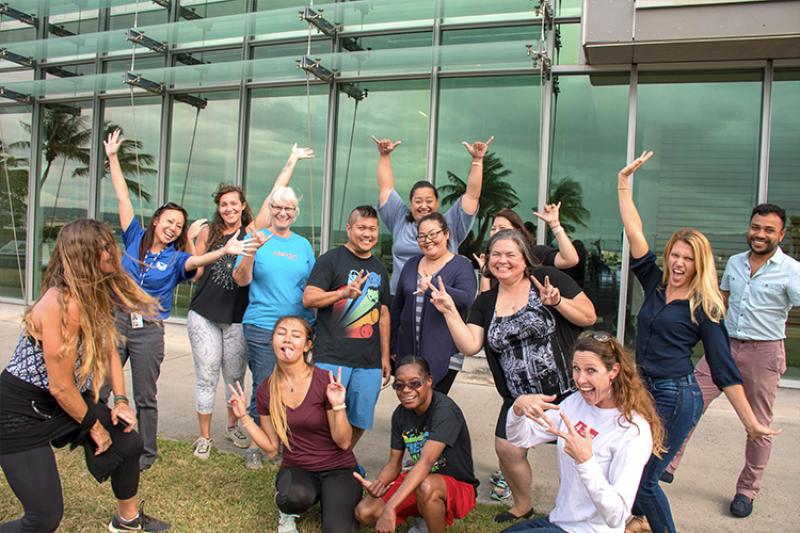Students are inspired by teachers, but who inspires teachers? NOAA Fisheries staff in the Pacific Islands taught a group of teachers about our important research so the teachers can share what they learned in the classroom.
On March 26, 2019, a group of middle school science teachers came to our NOAA Pacific Islands Region facility to participate in an all-day Teacher Workshop, the first of its kind. The workshop was a joint effort between the Pacific Islands Fisheries Science Center (PIFSC) and the Pacific Islands Regional Office (PIRO), and the day was full of hands-on activities, including a fish dissection, a demonstration of how scientists determine the sex of a sea turtle using hormones, and an advanced technology show-and-tell.
The Teacher Workshop was a great opportunity for teachers to learn first-hand about the exciting research NOAA Fisheries conducts, as well as about how our research informs important management decisions. We hope that the inquisitive instructors will take what they learned at the workshop back to the classroom, helping to inspire the next generation of conservation scientists and policy makers.


To begin the day, PIRO Regional Administrator Michael Tosatto welcomed the group of participants and shared his enthusiasm for educators, noting that his wife and daughters were in the teaching field. Communication specialist Jolene Lau then provided a brief overview of NOAA and PIRO while outreach and education coordinator Ali Bayless provided an overview of PIFSC and the agenda for the day.
Eager learners quickly hopped to the science lab where research fisheries biologists Ryan Nichols, Max Lee (intern), and Erin Reed led the group on a fish life history lesson. With their goatfish specimens, the first teachers learned how to measure and weigh the fish. Donning closed-toed shoes, aprons, and gloves, they then conducted fish dissections to learn the age and sex of the fish samples. Finally, they learned how to find the fish’s ear bones, or otoliths, and studied them under microscopes.


Marine biological researcher Camryn Allen and sea turtle recovery coordinator Irene Kelly led the Sea Turtle Module to help participants learn how to identify the difference between green sea turtles, hawksbill turtles, leatherback turtles, loggerhead turtles, and olive ridley turtles. The experts guided the teachers in taking fake blood samples and using the centrifuge machine to separate, pipette, and analyze the blood to determine sea turtle sex. Additionally, Camryn shared her research on how temperature affects the sex of turtle eggs and Irene shared her turtle conservation work with partners and volunteers.



Advanced technology program lead Ruhul Amin, cetacean (whales and dolphins) acoustician Yvonne Barkley, fishery information specialist Eric Forney, research marine biologist Jessica Bohlander, and geographic information specialist (GIS) Robert O`Conner were all part of the Advanced Technology Module at the end of the day. They each had a show-and-tell with their research equipment and products from their work. Ruhul displayed various types of underwater camera systems and explained how scientists use them to inform stock assessments of various commercially important fish species. Yvonne illustrated how biologists use acoustics to study cetacean species around the Hawaiian archipelago. Eric displayed a tablet similar to the one observers will be using to report their findings during longline fishing trips electronically and in real-time. Both Jessica and Rob displayed unmanned aircraft systems that scientists and conservation managers assess protected species and map nearshore marine habitats.




Thank you to all the teachers that took time to participate with us. Special mahalo to all the principals who supported their teacher’s attendance. Last but not least, we’d like to give a big shout out to all the dedicated speakers from PIFSC and PIRO who shared their expertise and left the teachers with a memorable experience of NOAA Fisheries.

